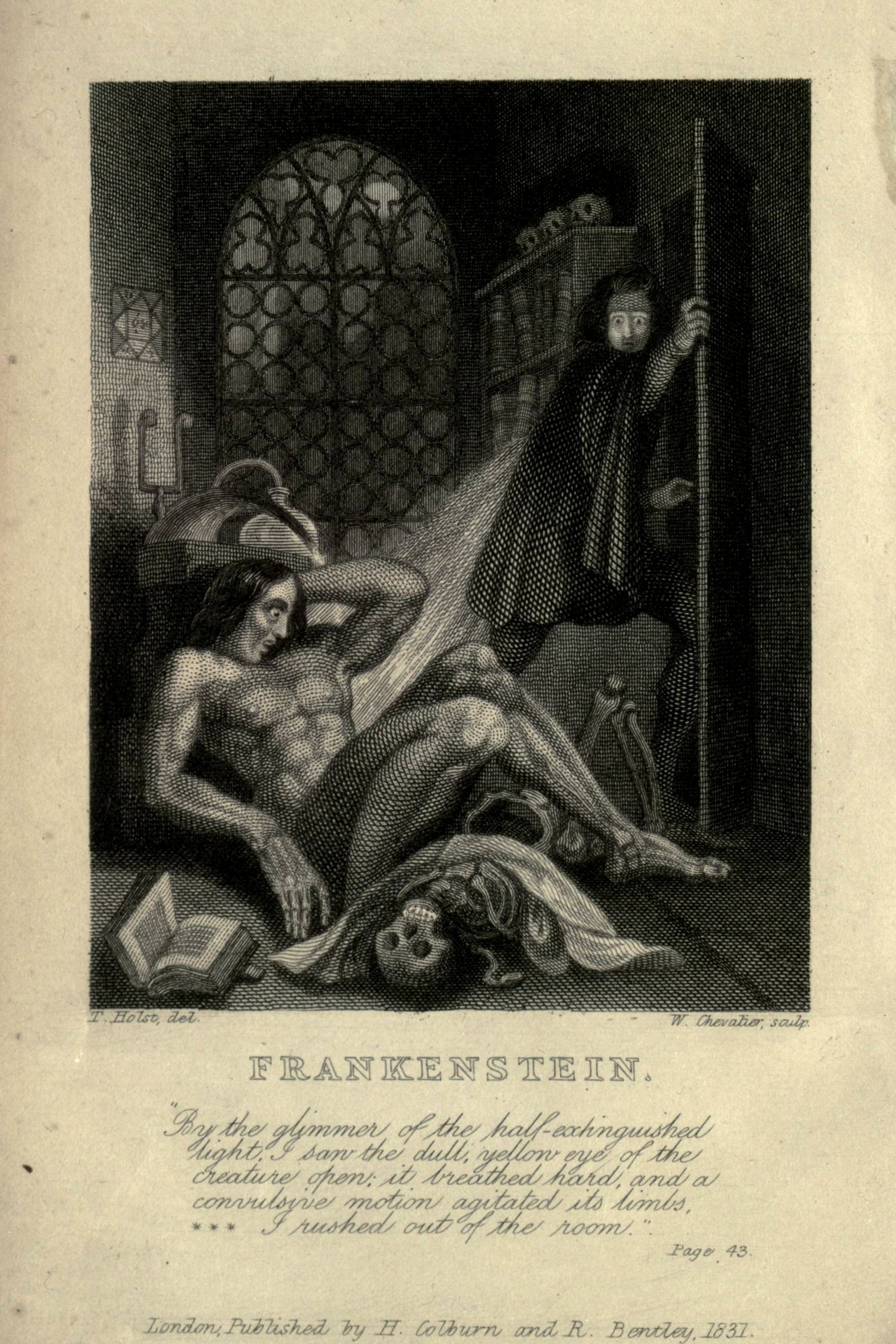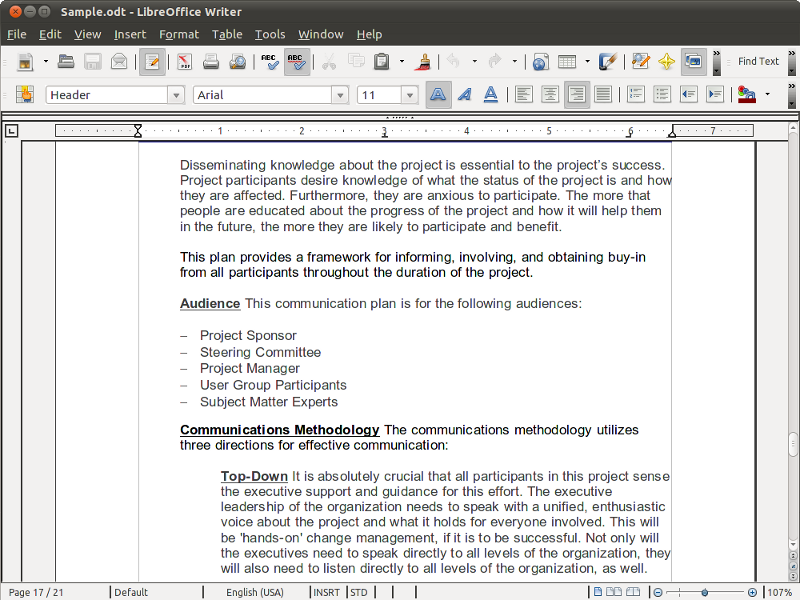|
Structured Document
A structured document is an electronic document where some method of markup language, markup is used to identify the whole and parts of the document as having various meanings beyond their formatting. For example, a structured document might identify a certain portion as a "chapter title" (or "code sample" or "quatrain") rather than as "Helvetica bold 24" or "indented Courier". Such portions in general are commonly called "components" or "elements" of a document. Overview Structured documents generally focus on labeling things that can be used for a variety of processing purposes, not merely formatting. For example, explicit labeling of "chapter title" or "emphasis" is far more useful to systems for the visually impaired, than merely "Helvetica bold 24" or "italic". In the same way, meaningful labeling of the many items on a technical information sheet enables far better integration with databases, search systems, online catalogs, and so on. Structured documents generally support ... [...More Info...] [...Related Items...] OR: [Wikipedia] [Google] [Baidu] |
Electronic Document
An electronic document is a document that can be sent in non-physical means, such as telex, email, and the internet. Originally, any computer data were considered as something internal—the final data output was always on paper. However, the development of computer networks has made it so that in most cases it is much more convenient to distribute electronic documents than printed ones. The improvements in electronic visual display technologies made it possible to view documents on a screen instead of printing them (thus saving paper and the space required to store the printed copies). However, using electronic documents for the final presentation instead of paper has created the problem of multiple incompatible file formats. Even plain text computer files are not free from this problem—e.g. under MS-DOS, most programs could not work correctly with UNIX-style text files (see newline), and for non-English speakers, the different code pages always have been a source of ... [...More Info...] [...Related Items...] OR: [Wikipedia] [Google] [Baidu] |
Electronic Data Interchange
Electronic data interchange (EDI) is the concept of businesses electronically communicating information that was traditionally communicated on paper, such as purchase orders, advance ship notices, and invoices. Technical standards for EDI exist to facilitate parties transacting such instruments without having to make special arrangements. EDI has existed at least since the early 1970s, and there are many EDI standards (including ASC X12, X12, EDIFACT, OFTP, ODETTE, etc.), some of which address the needs of specific industries or regions. It also refers specifically to a family of standards. In 1996, the National Institute of Standards and Technology defined electronic data interchange as "the computer-to-computer interchange of a standardized format for data exchange. EDI implies a sequence of messages between two parties, either of whom may serve as originator or recipient. The formatted data representing the documents may be transmitted from originator to recipient via telecommun ... [...More Info...] [...Related Items...] OR: [Wikipedia] [Google] [Baidu] |
Overlapping Markup
In markup languages and the digital humanities, overlap occurs when a document has two or more structures that interact in a non-hierarchical manner. A document with overlapping markup cannot be represented as a tree. This is also known as concurrent markup. Overlap happens, for instance, in poetry, where there may be a metrical structure of feet and lines; a linguistic structure of sentences and quotations; and a physical structure of volumes and pages and editorial annotations. History The problem of non-hierarchical structures in documents has been recognised since 1988; resolving it against the dominant paradigm of text as a single hierarchy (an ''ordered hierarchy of content objects'' or ''OHCO'') was initially thought to be merely a technical issue, but has, in fact, proven much more difficult. In 2008, Jeni Tennison identified markup overlap as "the main remaining problem area for markup technologists". Markup overlap continues to be a primary issue in the digital stud ... [...More Info...] [...Related Items...] OR: [Wikipedia] [Google] [Baidu] |
Machine-readable Document
A machine-readable document is a document whose content can be readily processed by computers. Such documents are distinguished from more general machine-readable data by virtue of having further structure to provide the necessary context to support the business processes for which they are created. Definition Data without context is meaningless and lacks the four essential characteristics of trustworthy business records specified in ISO 15489 Information and documentation – Records management: * Reliability * Authenticity * Integrity * Usability The vast bulk of information is unstructured data and, from a business perspective, that means it is "immature", i.e., Level 1 (chaotic) of the Capability Maturity Model. Such immaturity fosters inefficiency, diminishes quality, and limits effectiveness. Unstructured information is also ill-suited for records management functions, provides inadequate evidence for legal purposes, drives up the cost of discovery in litigation, and ma ... [...More Info...] [...Related Items...] OR: [Wikipedia] [Google] [Baidu] |
Document Processor
A word processor (WP) is a device or computer program that provides for input, editing, formatting, and output of text, often with some additional features. Early word processors were stand-alone devices dedicated to the function, but current word processors are word processor programs running on general purpose computers, including smartphones, tablets, laptops and desktop computers. The functions of a word processor program are typically between those of a simple text editor and a desktop publishing program; Many word processing programs have gained advanced features over time providing similar functionality to desktop publishing programs. Common word processor programs include LibreOffice Writer, Google Docs and Microsoft Word. Background Word processors developed from mechanical machines, later merging with computer technology. The history of word processing is the story of the gradual automation of the physical aspects of writing and editing, and then to the refinement o ... [...More Info...] [...Related Items...] OR: [Wikipedia] [Google] [Baidu] |
Style Sheet Language
A style sheet language, or style language, is a computer language that expresses the presentation of structured documents. One attractive feature of structured documents is that the content can be reused in many contexts and presented in various ways. Different style sheets can be attached to the logical structure to produce different presentations. One modern style sheet language with widespread use is Cascading Style Sheets (CSS), which is used to style documents written in HTML, XHTML, SVG, XUL, and other markup language A markup language is a Encoding, text-encoding system which specifies the structure and formatting of a document and potentially the relationships among its parts. Markup can control the display of a document or enrich its content to facilitate au ...s. For content in structured documents to be presented, a set of stylistic rules – describing, for example, colors, fonts and layout – must be applied. A collection of stylistic rules is called a style sh ... [...More Info...] [...Related Items...] OR: [Wikipedia] [Google] [Baidu] |
Transclusion
In computer science, transclusion is the inclusion of part or all of an electronic document into one or more other documents by reference via hypertext. Transclusion is usually performed when the referencing document is displayed, and is normally automatic and transparent to the end user. The result of transclusion is a single integrated document made of parts assembled dynamically from separate sources, possibly stored on different computers in disparate places. Transclusion facilitates modular design (using the " single source of truth" model, whether in data, code, or content): a resource is stored once and distributed for reuse in multiple documents. Updates or corrections to a resource are then reflected in any referencing documents. In systems where transclusion is not available, and in some situations where it is available but not desirable, substitution is often the complementary option, whereby a static copy of the "single source of truth" is integrated into the r ... [...More Info...] [...Related Items...] OR: [Wikipedia] [Google] [Baidu] |
DocBook
DocBook is a Semantics (computer science), semantic markup language for technical documentation. It was originally intended for writing technical documents related to computer hardware and software, but it can be used for any other sort of documentation. As a semantic language, DocBook enables its users to create separation of presentation and content, document content in a presentation-neutral form that captures the logical structure of the content; that content can then be published in a variety of formats, including HTML, XHTML, EPUB, Portable Document Format, PDF, Manual page (Unix), man pages, WebHelp and Microsoft Compiled HTML Help, HTML Help, without requiring users to make any changes to the source. In other words, when a document is written in DocBook format it becomes easily portable into other formats, rather than needing to be rewritten. Design DocBook is an XML language. In its current version (5.x), DocBook's language is formally defined by a RELAX NG XML schema, ... [...More Info...] [...Related Items...] OR: [Wikipedia] [Google] [Baidu] |
Semantic Markup
Semantic HTML is the use of HTML markup to reinforce the semantics, or meaning, of the information in web pages and web applications rather than merely to define its presentation or look. Semantic HTML is processed by traditional web browsers as well as by many other user agents. CSS is used to suggest how it is presented to human users. History HTML has included semantic markup since its inception. In an HTML document, the author may, among other things, "start with a title; add headings and paragraphs; add emphasis to hetext; add images; add links to other pages; nduse various kinds of lists". Various versions of the HTML standard have included presentational markup such as <font> (added in HTML 3.2; removed in HTML 4.0 Strict), <i> (all versions) and <center> (added in HTML 3.2). There are also the semantically neutral span and div elements. Since the late 1990s when Cascading Style Sheets were beginning to work in most browsers, web authors have been ... [...More Info...] [...Related Items...] OR: [Wikipedia] [Google] [Baidu] |
Ontology
Ontology is the philosophical study of existence, being. It is traditionally understood as the subdiscipline of metaphysics focused on the most general features of reality. As one of the most fundamental concepts, being encompasses all of reality and every entity within it. To articulate the basic structure of being, ontology examines the commonalities among all things and investigates their classification into basic types, such as the Theory of categories, categories of particulars and Universal (metaphysics), universals. Particulars are unique, non-repeatable entities, such as the person Socrates, whereas universals are general, repeatable entities, like the color ''green''. Another distinction exists between Abstract and concrete, concrete objects existing in space and time, such as a tree, and abstract objects existing outside space and time, like the number 7. Systems of categories aim to provide a comprehensive inventory of reality by employing categories such as Substance t ... [...More Info...] [...Related Items...] OR: [Wikipedia] [Google] [Baidu] |
Oxford English Dictionary
The ''Oxford English Dictionary'' (''OED'') is the principal historical dictionary of the English language, published by Oxford University Press (OUP), a University of Oxford publishing house. The dictionary, which published its first edition in 1884, traces the historical development of the English language, providing a comprehensive resource to scholars and academic researchers, and provides ongoing descriptions of English language usage in its variations around the world. In 1857, work first began on the dictionary, though the first edition was not published until 1884. It began to be published in unbound Serial (literature), fascicles as work continued on the project, under the name of ''A New English Dictionary on Historical Principles; Founded Mainly on the Materials Collected by The Philological Society''. In 1895, the title ''The Oxford English Dictionary'' was first used unofficially on the covers of the series, and in 1928 the full dictionary was republished in 10 b ... [...More Info...] [...Related Items...] OR: [Wikipedia] [Google] [Baidu] |
REST
REST (Representational State Transfer) is a software architectural style that was created to describe the design and guide the development of the architecture for the World Wide Web. REST defines a set of constraints for how the architecture of a distributed, Internet-scale hypermedia system, such as the Web, should behave. The REST architectural style emphasises uniform API, interfaces, independent deployment of Software component, components, the scalability of interactions between them, and creating a Multitier architecture, layered architecture to promote caching to reduce user-perceived latency (engineering), latency, enforce computer security, security, and encapsulate legacy systems. REST has been employed throughout the software industry to create stateless protocol, stateless, reliable, web application, web-based applications. An application that adheres to the #Architectural constraints, REST architectural constraints may be informally described as ''RESTful'', althoug ... [...More Info...] [...Related Items...] OR: [Wikipedia] [Google] [Baidu] |



